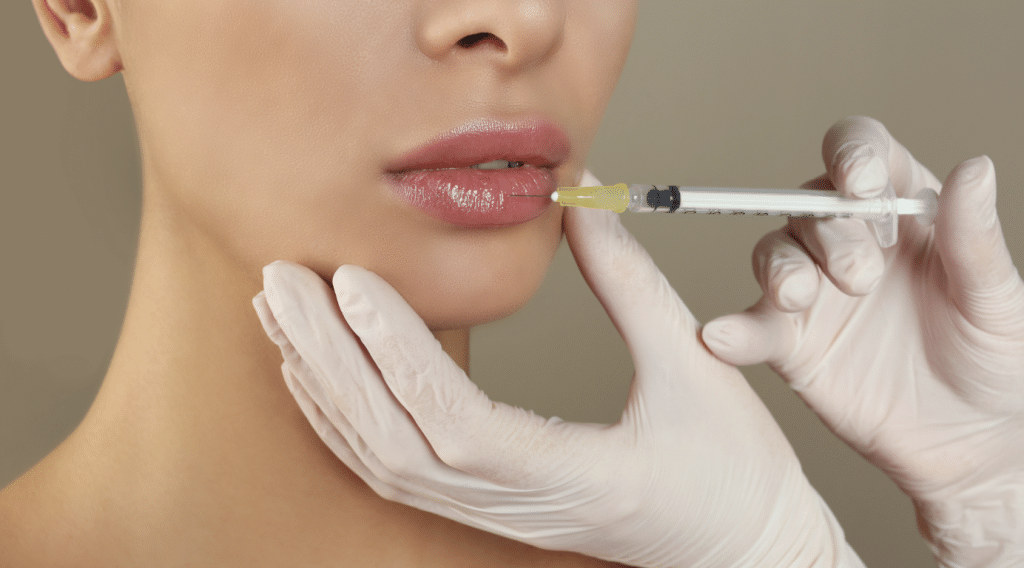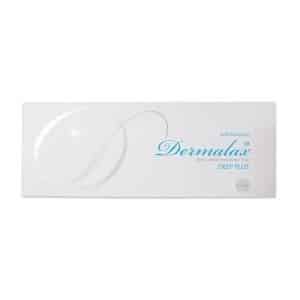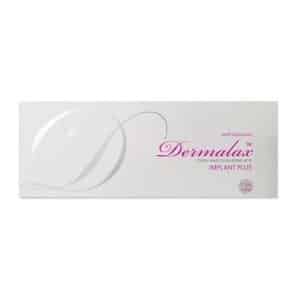Hyaluronic acid is vital in maintaining skin hydration and elasticity, making it a popular ingredient in dermal fillers. Research has shown that hyaluronic acid fillers can effectively reduce wrinkles and restore facial volume, enhancing a youthful appearance.
Among the many hyaluronic acid-based fillers available, Dermalax and Revolax stand out for their effectiveness and popularity. Each offers unique formulations and benefits, making the choice between them dependent on individual preferences and specific treatment goals.
This article will explore the key differences between Dermalax and Revolax, helping you decide which filler best fits your aesthetic needs.
Key Takeaways
- Dermalax and Revolax are both hyaluronic acid-based dermal fillers known for their effectiveness and popularity in aesthetic treatments.
- Dermalax is ideal for subtle enhancements and fine line treatments, while Revolax is better suited for deeper, more dramatic volumizing and contouring needs.
- Dermalax and Revolax utilize high-purity hyaluronic acid and lidocaine, with differences in hyaluronic acid concentration, cross-linking technology, and application areas.
- Patient outcomes for both fillers show high levels of satisfaction, with Dermalax demonstrating significant clinical effectiveness in treating moderate to severe nasolabial folds and Revolax providing immediate volume and smoothness lasting up to 18 months.
About: Medical Spa RX provides medical practices with premium products at the best prices. If you’re looking to buy Dermalax wholesale for your practice, the sales representatives at Medical Spa RX can give you guidance.
Introduction to Dermalax and Revolax

Dermalax is a premium hyaluronic acid-based dermal filler known for its smooth consistency and long-lasting effects. It is specifically designed to treat fine lines and wrinkles and add volume to areas like the lips and cheeks. The high level of cross-linked hyaluronic acid in Dermalax ensures durability and a natural look, making it a popular choice among patients seeking subtle yet noticeable enhancements.
Revolax is another leading hyaluronic acid-based dermal filler renowned for its versatile formulations and quick results. With a thicker gel consistency, Revolax is ideal for deeper wrinkles, facial contouring, and volumizing treatments. Its smooth and highly purified formula integrates well with the skin, providing immediate and natural-looking results, contributing to its growing popularity in aesthetic treatments.
Composition and Ingredients

Dermalax is formulated with high-purity hyaluronic acid, a naturally occurring substance in the body known for its hydrating properties. The key ingredients include:
- Hyaluronic Acid (20mg/mL): Provides deep hydration and volume.
- Lidocaine (0.3%): Ensures a more comfortable injection experience by reducing pain.
Revolax also features high-purity hyaluronic acid and is known for its advanced cross-linking technology. The key ingredients include:
- Hyaluronic Acid (24mg/mL): Offers enhanced hydration and volume.
- Lidocaine (0.3%): Included for pain relief during the procedure,
When comparing Dermolax vs Revolax, both dermal fillers utilize hyaluronic acid and lidocaine, but there are notable differences:
- Hyaluronic Acid Concentration: Revolax contains a higher concentration (24mg/mL) than Dermalax (20mg/mL), potentially offering more pronounced volumizing effects.
- Cross-Linking Technology: Revolax employs advanced cross-linking technology, enhancing the filler’s stability and longevity.
- Application Areas: Both are versatile and offer different types of fillers. For example, Dermalax lip filler is specifically designed for lip augmentation, while Revolax offers Fine, Deep, and Sub-Q for various areas.
Application Areas
Dermalax fillers are versatile and can be used to address various facial concerns. Common application areas include:
- Lips: Enhancing volume and shape for a fuller appearance.
- Cheeks: Restoring volume and contouring for a youthful look.
- Nasolabial Folds: Smoothing the lines running from the nose to the mouth corners.
- Marionette Lines: Softening the lines that run from the corners of the mouth to the chin.
- Jawline: Defining and sculpting for a more structured appearance.
Revolax fillers are also widely used for facial enhancements, with specific products tailored for different areas:
- Lips: Achieving plump and natural-looking lips.
- Cheeks: Adding volume and contour.
- Nasolabial Folds: Reducing deep lines and wrinkles.
- Chin: Enhancing definition and balance.
- Forehead Lines: Smoothing out fine lines and wrinkles.
When comparing Dermalax vs. Revolax, Dermalax excels in subtle enhancements and fine line treatments, making it ideal for areas requiring a softer touch. In contrast, Revolax is better suited for deeper, more dramatic volumizing and contouring needs, catering to patients seeking more significant structural changes.
Effectiveness and Patient Outcomes

Image Courtesy of CCW Aesthetics
Dermalax fillers have demonstrated significant clinical effectiveness in various studies. They are particularly effective in treating moderate to severe nasolabial folds, with results showing high patient satisfaction and noticeable improvements in skin elasticity and volume. The advanced cross-linking technology used in Dermalax ensures long-lasting results and stability.

Image Courtesy of Revolax
Revolax fillers are also highly effective, utilizing advanced cross-linking technology to enhance stability and longevity. Clinical studies have shown that Revolax fillers provide immediate volume and smoothness, with effects lasting up to 18 months. They are particularly effective in contouring facial features and reducing wrinkles.
Patient Outcomes and Satisfaction
Patients using Dermalax fillers report high satisfaction levels, citing natural-looking results and improved self-esteem. The fillers’ ability to provide immediate, long-lasting effects contributes to their popularity. Many patients appreciate the minimal discomfort during the procedure, thanks to the inclusion of lidocaine.
Revolax fillers also receive positive feedback from patients, who appreciate the smooth consistency and ease of injection. The natural-looking results and long duration of effects, up to 24 months, contribute to high patient satisfaction6. Patients often highlight the minimal side effects and quick recovery time as additional benefits.
Injection Techniques
For Dermalax fillers, the recommended injection techniques vary depending on the treatment area and the desired outcome:
- Linear Threading: Ideal for enhancing lips and addressing fine lines. The needle is inserted along the length of the wrinkle or fold, and the filler is injected as the needle is withdrawn.
- Serial Puncture: Useful for precise placement in areas like the nasolabial folds. Multiple small injections are made along the wrinkle or fold.
- Fanning Technique: Effective for volumizing larger areas such as the cheeks. The needle is inserted at a single entry point, and multiple threads of filler are injected in a fan-like pattern.
Revolax fillers also have specific techniques to optimize results:
- Linear Threading and Tunneling: Commonly used for deeper wrinkles and folds. The needle is inserted at an angle, and the filler is injected while the needle is slowly withdrawn.
- Microdroplet Technique: Suitable for delicate areas like the under-eye region. Small amounts of filler are injected in a series of microdroplets to ensure even distribution.
- Cannula Technique: Often used for areas requiring minimal bruising and swelling, such as the cheeks and jawline. A blunt-tipped cannula is used to inject the filler, reducing the risk of puncturing blood vessels.
When comparing Dermalax vs. Revolax, Dermalax’s softer, more flexible formulation lends itself to techniques that focus on precision and subtlety, which is ideal for fine-tuning delicate areas.
In contrast, Revolax’s firmer consistency is suited for techniques that require deeper placement and structural enhancement, catering to patients seeking more dramatic volumizing and contouring results.
Potential Side Effects
Both Dermalax and Revolax are generally safe when administered by a qualified professional, but like all dermal fillers, they come with some potential side effects. Here’s an overview of what to expect:
Dermalax
- Mild swelling, redness, or bruising at the injection site
- Temporary tenderness or discomfort
- Rarely, lumpiness or unevenness that usually resolves on its own
Revolax
- Swelling, bruising, and redness at the injection site
- Slight firmness or nodules under the skin
- Mild pain or discomfort, which generally subsides within a few days
Both Dermalax and Revolax share similar side effects, such as swelling, redness, and bruising. However, Revolax’s denser formulation may occasionally result in more noticeable firmness or nodules, especially in areas with thinner skin. Dermalax’s smoother consistency generally offers a softer finish with fewer textural concerns.
Conclusion
Choosing between Dermalax and Revolax depends on your specific aesthetic goals and treatment needs. Both fillers deliver excellent results for smoothing wrinkles and enhancing facial features. Dermalax is ideal for subtle enhancements in delicate areas like the lips and eyes, while Revolax excels in volumizing the cheeks and addressing deeper lines.
Understanding your desired outcomes, target areas, and budget will help guide you in selecting the best filler to achieve a youthful, refreshed appearance.
FAQs
1. What is the main difference between Dermalax and Revolax?
The main difference between Dermalax and Revolax is that Dermalax is primarily used for smoothing wrinkles and enhancing overall skin texture, while Revolax is known for creating lip volume, lifting and contouring cheeks, and reshaping the chin.
2. Which one lasts longer – Dermalax or Revolax?
Revolax typically lasts longer, with effects lasting up to 18 months, compared to Dermalax, which lasts around 6-12 months.
3. Are there any side effects I should know about with these fillers?
Common side effects of Dermalax and Revolax fillers include redness, swelling, bruising, and tenderness at the injection site.
References
La Gatta, A., Salzillo, R., Catalano, C., D’Agostino, A., & Schiraldi, C. (2019). Hyaluronic acid in cosmetic dermatology. Journal of Clinical Dermatology, 2(1), 34-40.
Wongprasert, P., Dreiss, C. A., & Murray, G. (2022). Evaluating hyaluronic acid dermal fillers: A critique of current characterization methods. Dermatologic therapy, 35(6), e15453. https://doi.org/10.1111/dth.15453
Kaufman-Janette, J., Joseph, J. H., Dayan, S. H., Smith, S., Eaton, L., & Maffert, P. (2022). Patient Comfort, Safety, and Effectiveness of Resilient Hyaluronic Acid Fillers Formulated With Different Local Anesthetics. Dermatologic surgery : official publication for American Society for Dermatologic Surgery [et al.], 48(10), 1065–1070. https://doi.org/10.1097/DSS.0000000000003541























